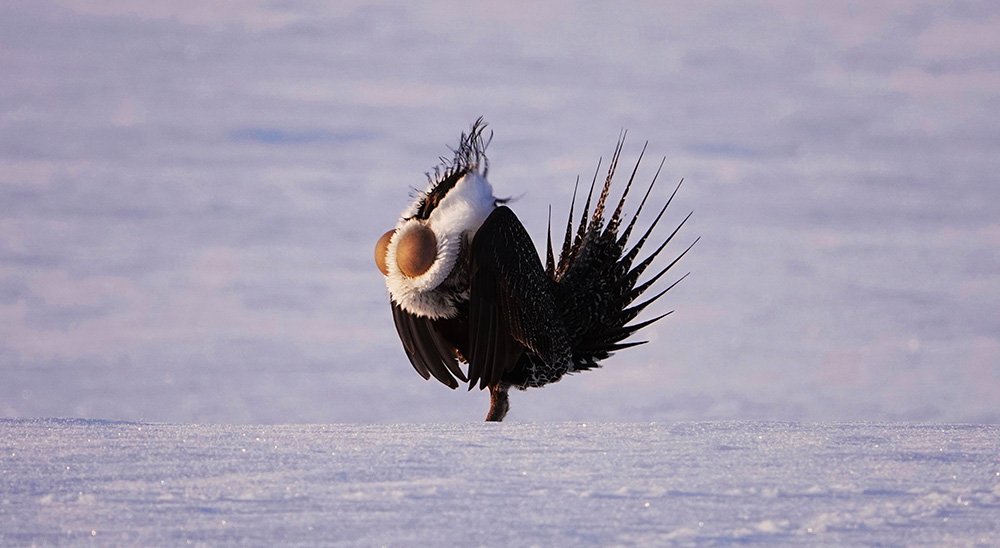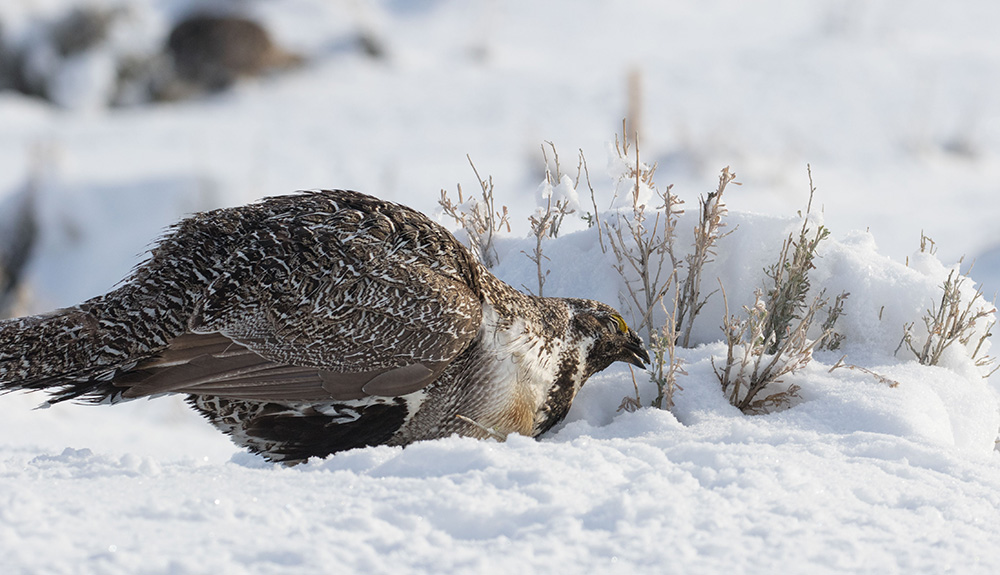
This post was written by Ellie Neifeld, 2019 Mono Lake Intern.
Join us on Wednesday, September 4 at 4:00pm in the Mono Lake Committee gallery for this week’s Refreshments with Refreshing ‘Ologists presentation. Eric Tymstra, PhD candidate at UC Davis, will be here to discuss his research on the Greater Sage-grouse, their behavior, diet, and conservation. If you can join us for this free event, please register here.

Conservation and restoration efforts aim to protect organisms and the areas that they use. Herbivores in particular face unique challenges when it comes to habitat use: many plants have high fiber content, low nutritional value, and defenses such as toxins. In response to toxic, low-quality food, many herbivores have evolved counter defenses, such as large digestive tracts, detoxification pathways, and foraging behaviors. Identifying the chemical properties of the landscape that are important to herbivores will allow managers to improve conservation and restoration efforts. To do this, it is necessary to understand how herbivores deal with toxins and how plant chemistry affects behavior.
Eric’s presentation will address how Greater Sage-grouse (Centrocercus urophasianus), an avian folivore, balance the costs of display, foraging, and detoxification during the breeding season. From early March until mid-May, male Sage-grouse attend leks in the sagebrush steppe and perform a complex energy-intensive display—the strut—to attract females. Sage-grouse have declined approximately 95% across their range since they were first described by Lewis and Clark, largely due to habitat loss and degradation. Sage-grouse have been considered for federal listing as an endangered species multiple times. In California, home to the genetically distinct Bi-State population, Sage-grouse are listed as a California Species of Special concern. For Sage-grouse, understanding how habitat quality influences reproductive success on the lek and how diet selection varies across the range will allow us to identify habitats and populations that may be in danger.

